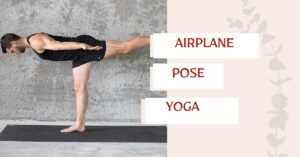Introduction to the Palm Tree Yoga Pose
The palm tree yoga pose, also known as “Tadasana” in Sanskrit, is a fundamental yoga posture with profound significance in yoga practice. This pose, named for its resemblance to the tall and sturdy palm tree, is more than just a stretch; it’s a practice that embodies stability, growth, and resilience.
Whether you’re a seasoned yoga enthusiast or a fitness beginner, the palm tree yoga pose offers a wealth of benefits that can enhance both your physical and mental well-being.
At Aatm Yogashala, incorporating the palm tree yoga pose into your routine can significantly improve your overall wellness.Steps to Perform the Palm Tree Yoga Pose
- Starting Position: Begin by standing with your feet together, ensuring that your weight is distributed evenly across both feet. Align your heels and big toes, and extend your arms naturally alongside your body.
- Establishing the Base: Firmly root your feet into the ground, feeling the connection with the earth. Engage your leg muscles and gently lift your kneecaps to activate your thigh muscles.
- Aligning the Spine: Lengthen your spine by imagining a thread pulling the crown of your head upwards. Keep your chin parallel to the floor, and soften your gaze forward.
- Raising the Arms: On an inhalation, slowly raise your arms overhead. Keep your palms facing each other and fingers extended. Ensure your shoulders are relaxed and away from your ears.
- Reaching Upward: Stretch your body upwards, reaching for the sky. Feel the elongation from your feet, through your legs, torso, and arms, as if you are a growing palm tree. Remain grounded while you maintain the stretch.
- Maintaining the Pose: Hold this position for several breaths, focusing on deep, even inhalations and exhalations. Visualize stability and growth, embodying the qualities of the palm tree.
- Releasing the Pose: To release the pose, slowly lower your arms back to your sides on an exhalation and gently return to the starting position. Take a moment to observe the sensations in your body and the calmness in your mind.
Modifications for Beginners:
- Support: If balancing is challenging, practice near a wall for support.
- Foot Position: Keep your feet hip-width apart to provide a broader base of support.
Advanced Variations:
- Adding Motion: Transition into a gentle side bend, stretching each side of the body while maintaining balance.
- Deeper Focus: Close your eyes to challenge your balance and deepen your mental focus.
Health Benefits of the Palm Tree Pose
The palm tree yoga pose offers a multitude of health benefits, making it a valuable addition to any yoga practice:
Improved Balance
By practicing the palm tree yoga pose, you train your body to maintain stability, enhancing your overall balance and coordination.
Enhanced Posture
This pose helps align the spine and strengthens the muscles that support good posture, reducing the risk of back pain and improving overall body alignment.
Increased Mental Focus
Holding the pose requires concentration and mindfulness, which can improve mental clarity and reduce stress. As Yoga Master Amit says, “The palm tree yoga pose is not just about physical balance; it’s a practice in finding your center, both mentally and physically.”
Holistic Wellness
Dr. Priya, a renowned yoga therapist, asserts, “Incorporating the palm tree into your daily practice can significantly improve your posture by strengthening your spine and increasing flexibility.” This holistic approach to fitness benefits both the mind and body.
Incorporating the Palm Tree yoga Pose into Your Daily Yoga Routine
Including the palm tree yoga pose in your daily yoga routine can enhance your wellness and fitness goals. Here are some tips:
Morning Practice
Start your day with the palm tree yoga pose to wake up your body, improve circulation, and set a balanced tone for the day.
Pre-Workout Stretch
Use this pose as part of your warm-up routine to stretch your muscles and prepare your body for more intense physical activity.
Mindfulness Break
Take a few moments during your workday to practice the palm tree yoga pose, helping to relieve tension and refocus your mind.
What is the Palm Tree Pose Called?
The Palm Tree yoga Pose is referred to as “Tadasana” in Sanskrit, a term derived from the words “Tada” meaning mountain and “Asana” meaning pose. It is sometimes also translated as “Mountain Pose.”
The name reflects the stability and groundedness of a mountain, emphasizing the importance of a strong foundation and an elongated spine.
This foundational pose is integral to many yoga practices and serves as a starting point or transitional posture in various sequences. Understanding its Sanskrit name and meaning helps practitioners appreciate the deeper philosophical and cultural roots embedded in this simple yet profound pose.
Best Time to Do the Palm Tree Yoga Pose
While the palm tree yoga pose can be practiced at any time of the day, certain moments are particularly beneficial for maximizing its effects. Here are some of the best times to incorporate this pose into your routine:
Early Morning
Practicing the palm tree yoga pose in the early morning is highly advantageous. This helps to awaken your body, stretch your muscles after a night’s rest, and set a positive, energetic tone for the day. Morning practice can also enhance focus and balance, making you feel more centred and prepared for the tasks ahead.
During Midday Breaks
Including the palm tree yoga pose during midday breaks is an excellent way to combat midday fatigue. This quick and refreshing stretch can alleviate stiffness from long periods of sitting or working at a desk. It also promotes increased circulation and mental clarity, helping you to remain productive and focused for the rest of the day.
Before Bedtime
Performing the palm tree yoga pose before bedtime can aid in relaxation and promote better sleep. This gentle stretch helps to release tension built up throughout the day and calms the mind. Incorporating this pose into your evening routine can signal to your body that it’s time to unwind and prepare for rest, improving the quality of your sleep.
Pre- or Post-Workout
The palm tree yoga pose is equally valuable as a pre-workout stretch to prepare your muscles for more intense activity, and as a post-workout cool down to prevent stiffness and enhance muscle recovery. This pose helps to gradually increase flexibility and ensures that your body maintains a balanced state before and after physical exertion.
By choosing the best times to practice the palm tree yoga pose, you can fully harness its myriad benefits, making it a versatile addition to your yoga and wellness routines.
Conclusion Palm Tree Yoga Pose
The palm tree yoga pose is a powerful yoga posture that offers a myriad of benefits for both the body and mind. By incorporating this pose into your routine, you can improve your balance, posture, and mental focus, contributing to your overall wellness.
(FAQs) Palm Tree Yoga Pose
1. How long should I hold the palm tree yoga pose?
The duration for holding the palm tree yoga pose can vary depending on your comfort level and experience. Beginners may start with 15-30 seconds, gradually increasing to 1-2 minutes as they build strength and balance. Advanced practitioners might hold the pose for even longer to deepen their focus and mindfulness.
2. Is the palm tree pose suitable for beginners?
Yes, the palm tree pose is suitable for beginners. It is a foundational yoga posture that helps build balance and posture. Beginners can modify the pose by using a wall for support or keeping their feet hip-width apart to maintain stability.
3. Can pregnant women practice the palm tree pose?
Pregnant women can practice the palm tree pose, but it’s essential to do so under the guidance of a qualified yoga instructor. The gentle stretch and focus on balance can be beneficial, but modifications may be necessary to ensure safety and comfort.
4. What should I do if I experience discomfort while performing the palm tree pose?
If you experience discomfort while performing the palm tree pose, it’s crucial to listen to your body and make adjustments. Ensure you are not overextending or pushing beyond your limits. You can modify the pose or consult a yoga instructor to ensure you are practicing it correctly.
5. How often should I incorporate the palm tree pose into my routine?
For optimal benefits, it’s recommended to incorporate the palm tree pose into your daily yoga routine. Practicing it once or twice a day can significantly improve your balance, posture, and mental focus. For those with busier schedules, even practicing it a few times a week can yield positive results.




